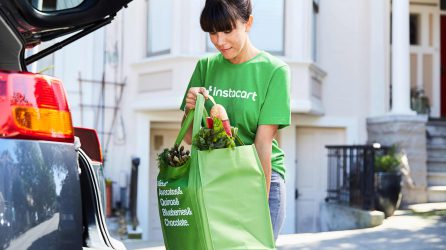Why CPGs need to bring a challenger mindset to omnichannel retail

Presented by:
Josi Mathar — 2022
Can you turn a notoriously online-unfriendly product into an eCommerce success?
A new crop of DTC challenger brands is looking to do exactly that by reinventing chewing gum for the digital age.
It won’t be easy. From an eCommerce perspective, chewing gum is a nightmare. Low-priced and heavily reliant on front-of-store sales, it’s exactly the kind of impulse product that will always struggle online.
That’s according to current category wisdom, at least. Niche brands such as Mighty Gum and Neuro Gum want to defy that narrative by repositioning gum as an aspirational, premium product that consumers will actively seek out online. They’re on a mission to prove that, with the right proposition, route to market, and category story, chewing gum can beat the odds and become an unlikely eCommerce success.

It’s an eye-catching story which I believe provides important lessons for CPGs.
Category norms are set by established brands that are comfortable with the status quo. They’ve developed a point of view about the category that serves them well and have little reason to think outside the box or pursue new ideas.
Challengers don’t have that luxury. They know they won’t succeed by fitting in with the status quo. Being a successful challenger is ultimately about offering an alternative vision for a category – a vision that promises consumers and retailers something more exciting (and profitable) than the status quo created by established brands.
The hard seltzer craze is a case in point. Challengers like White Claw have managed to succeed in an incredibly competitive market because they put forward a new vision for how alcohol brands could engage health-conscious consumers. They correctly identified an under-served segment of shoppers who still wanted to drink alcohol but were put off by the sugar and calories of traditional drinks. Enter the low-sugar, low-carb spiked seltzer, complete with punchy branding and strong consumer messaging. Enter the low-sugar, low-carb spiked seltzer, complete with punchy branding and strong consumer messaging. The global hard seltzer market size is expected to expand at a compound annual growth rate of 22.9% from 2022 to 2030. No wonder the 800-pound gorillas of the sector, including Bud Light, have jumped on the trend and are releasing their own versions.
The barriers to disruption have been lowered
This kind of disruptive thinking is hard to emulate for established CPG brands, but it’s increasingly important they find ways to do so – not just in terms of product development but also omnichannel strategy.
Although the coronavirus pandemic has generally served big brands well, it would be dangerous for CPGs to rest on their laurels now. The eCommerce boom of the recent past has further lowered the barriers to disruption. With more consumers shopping for groceries online and getting inspiration from social media, disruptive thinking can happen on many more platforms now.
Challengers can mount a true omnichannel effort against established brands, using powerful SEO to punch well above their weight in terms of visibility and ability to capture consumers’ attention. What’s more, direct-to-consumer selling has opened up ways to succeed outside of traditional retail and enabled challengers to forge much more personal relationships with shoppers.
CPG brands that don’t take an equally omnichannel approach in the new normal could find themselves outpaced by much smaller competitors.
One key lesson to take from challengers in this context is to not spread yourself too thin. Challenger brands don’t have huge portfolios or budgets, so they’re naturally focused on a small number of priority items which they relentlessly focus on winning in their top retailers. Big CPGs, by contrast, often take more of a scattergun approach, which is much less effective. Figuring out your priorities is essential if you want to make an impact online.
A willingness to experiment is just as critical. The best challenger brands embrace a ‘test and learn’ mentality because that’s how you find pockets of growth. This applies to new product development and marketing as much as new retailers, marketplaces, and routes to market. If you always do tomorrow what you did yesterday, and you don’t test and learn, it’s hard to make progress in an omnichannel world – especially against competitors who thrive on experimentation and creativity.
Creating the right incentives
The good news is, established brands are just as capable of experimentation, but they must create the right incentives internally. Does your pay and bonus structure reward ‘test and learn’ or sticking with the same old safe bets? What about your signoff and decision-making processes? Are they agile enough to enable your teams to jump on new opportunities at speed?
Listening to a recent episode of the Digital Shelf Cast, I was impressed to hear Todd Hassenfelt, then Senior Director of eCommerce at Simple Mills and now eCommerce Director for Growth Strategy and Planning at Colgate-Palmolive, share how he encourages his team to “place bets” and consider “the cost of doing nothing” when experimenting with emerging channels and marketplaces such as Instacart. This approach has delivered great results for Simple Mills, enabling the brand to be nimble and respond to new trends across eCommerce and brick-and-mortar. It’s exactly the kind of ‘test and learn’ mentality that CPGs need to adapt if they want to thrive in today’s omnichannel environment.
Adopting a challenger mindset will be even more important as we emerge from Covid. Many consumers’ habits and preferences have been changed by the pandemic and are likely to remain volatile for some time. Brands will need to be able to respond quickly to changing demands around health, hygiene, and other trends.

They should also be mindful of how Covid-19 has impacted their ability to innovate. Remote working arrangements mean there are fewer watercooler moments and serendipitous conversations happening right now, which could reduce brands’ ability to be innovative and disruptive. Forward-thinking CPGs will be actively exploring ways to counteract this.
Of course, a challenger mentality isn’t a guarantee for success. No amount of scrappy creativity, SEO smarts, and omnichannel marketing will help you if you don’t have a great product. They can, however, help a great product get the success it deserves.
So, for now, the jury is out on whether chewing gum really can make it as a premium DTC proposition. What’s certain is that the new crop of gum challengers is bringing plenty of fresh thinking to the category, and giving the big, established brands lots to chew on.
I’ll be watching their progress with great interest.
All the digital Shelf Analytics You Need to Succeed at Speed & Scale
See why world leading brands choose e.fundamentals for actionable digital shelf insights
Request A demoLatest Resources

CommerceIQ Launches Global Retail Ecommerce Management Platform Combining Sales, Supply Chain, Retail Media, and Digital Shelf with e.fundamentals Acquisition
Ecommerce platform enables consumer brands to grow market share profitably in today’s inflationary and supply-constrained environment through intelligent automation, supporting over 450 omnichannel retailers in 41 countries.

e.fundamentals becomes a CommerceIQ company
e.fundamentals has been acquired by CommerceIQ, the leading Retail Ecommerce Management Platform, headquartered in Palo Alto, California. Consumer brands can now harness one global software platform to power profitable market share growth across all major retailers.

5 strategic pricing opportunities CPGs should focus on now
As tensions run high between retailers and suppliers, CPGs need to be smarter than ever about strategic pricing. Here’s how to use digital shelf analytics to hold your own in tough negotiations.

What the smartest CPGs get right about selling on Instacart
This post has been updated and was originally published March 30, 2021. It's time CPGs get ready to win on Instacart. So read and learn: What's all the hype around…

5 optimization tactics to grow digital shelf sales
This post has been updated and was originally published May 14, 2020. Consumer goods companies (CPG) continue to grapple with enormous shifts to the industry as the eCommerce boom continues…

5 tactics to grow online sales for category managers
Category management has changed. We've highlighted the 5 tactics to help you scale your growth on the digital shelf at speed.
View Our Most Popular resources to help you learn and win on the digital shelf.

The Ultimate Guide to Content Management on the Digital Shelf

The Digital Shelf Cast - Listen to our latest episode





